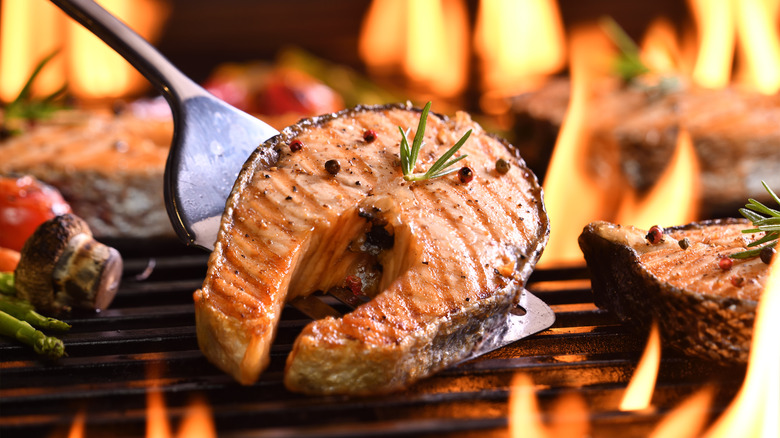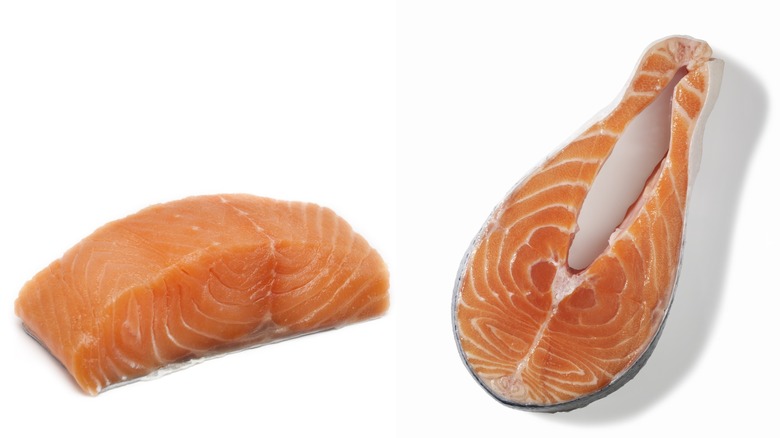Why Center Cuts Are King For Grilling Salmon
When people talk about the best cuts of meat for grilling, it's almost always in the context of beef. Countless debates have been had over what the MVP of steak cuts is, but fewer people pay attention to the MVP of salmon cuts. As with beef, pork, and chicken, fish are butchered into different cuts, and it's time we talked about their nuances.
The largest cut of salmon is called a side because it comprises an entire side of the fish. Each salmon produces two sides, one from each side of the spine, and the cut includes meat from just behind the head to the beginning of the tail fin. It is possible to cook a side of salmon whole (it can be used to make smoked salmon), but you're more likely to see the side broken down into smaller cuts, some of which are better to grill with than others.
A side of salmon includes the salmon belly—a thin strip of extra-fatty meat along the bottom of the fish. Its thin and fatty nature can make it prone to overcooking. The side also includes a portion of tail meat, which has an uneven texture, being thick in some spots and much thinner in others. The best cuts for grilling are found in the center of the salmon. They cook more evenly because the meat is thick and uniform.
Types of salmon center cuts
There are two main types of salmon center cut: steaks and fillets. Fillets are cut horizontally from the salmon side. Each fillet typically weighs around 6 to 8 ounces, a good serving size for one. Fillets have a very flaky texture due to the direction in which they are cut. Their delicate nature can be a bit challenging on the grill, but the meat should hold together as you leave the skin on (one of many reasons that it's a mistake to remove salmon skin). Fillets are generally the most common and popular cut of salmon, but there's another option that's arguably even better for grilling.
Unlike fillets, salmon steaks are not cut from a side of salmon. Instead, the steak is a cross-section of the whole salmon, combining pieces of two sides. Salmon steaks include a portion of the fish's spine where the two sides meet, and the bone actually imparts extra flavor as the fish cooks. Salmon steaks also include a strip of skin around the edge, which helps to hold the meat together. The steaks aren't as flaky as salmon fillets, but that can be helpful when grilling. You won't risk the meat flaking off and falling through the grill grates as you flip it. Salmon steaks are also more flavorful than fillets, and their sturdier nature makes them the easiest cut of salmon to grill.

